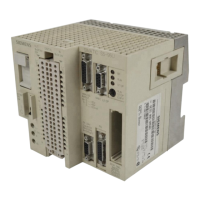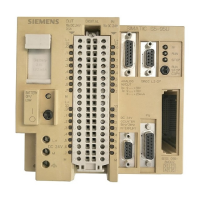Introduction to STEP 5 S5-95F
Reading Out the Interrupt PII
When OB13 is called, the signals of the external input modules are read into the interrupt PII. The
interrupt PII can be scanned in OB13 by means of the L PY x or L PW x load operations (load byte x
or word x of the interrupt PII in ACCU 1). There is an interrupt input data cycle prior to time-driven
program processing. The response time of the cyclical program processing is prolonged by the
interrupt data cycle time.
Writing to the Interrupt PIQ
Data to the external I/Os can be written to the interrupt PIQ by means of transfer operations T PY x
or T PW x. At the same time, data is written to the "normal" PIQ.
After termination of OB13, the data that has been transferred to the interrupt PIQ is output to the I/O
modules in an interrupt output data cycle (prior to "normal" program processing). The response
time of the cyclical program processing is prolonged by the interrupt data cycle time.
Note
The interrupt output data cycle is executed only if data has been written to the PIQ.
Time Interrupt Error
If the system is so heavily loaded that it cannot process OB13 during the defined OB13 call-up
interval, this leads to a time interrupt error (OB13 is called again before OB13 processing is
completed). In the case of a time interrupt error, the S5-95F goes to STOP. The same error can
occur if OB13 is frequently interrupted by interrupt calls.
Remedy:
• Extend your OB13 call-up interval
• Reduce the program in OB13
• Minimize the number of interrupt calls
7.4.5 Maximum Response Time with Time-Controlled Program Processing
Response time is the time between the change in an input signal and the change in an output signal.
The maximum response time with time-controlled program processing depends on the following:
• On the OB13 call-up interval set
• On the delay time t (see section 7.4.3)
• On the execution time T
OB13
of OB13
• On the delay time of the input module
• On the data cycle (if external I/O modules are used)
7-28
EWA 4NEB 812 6210-02

